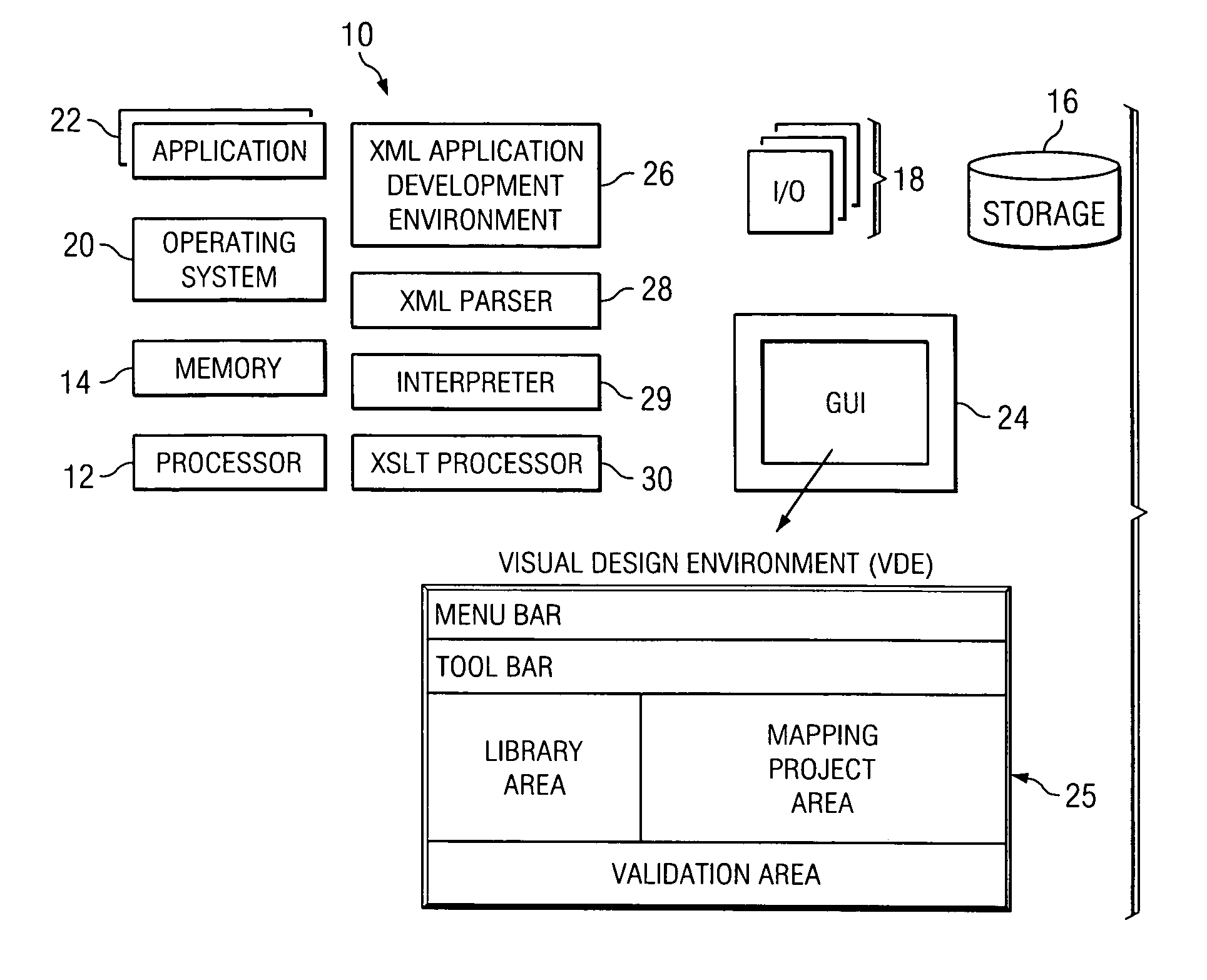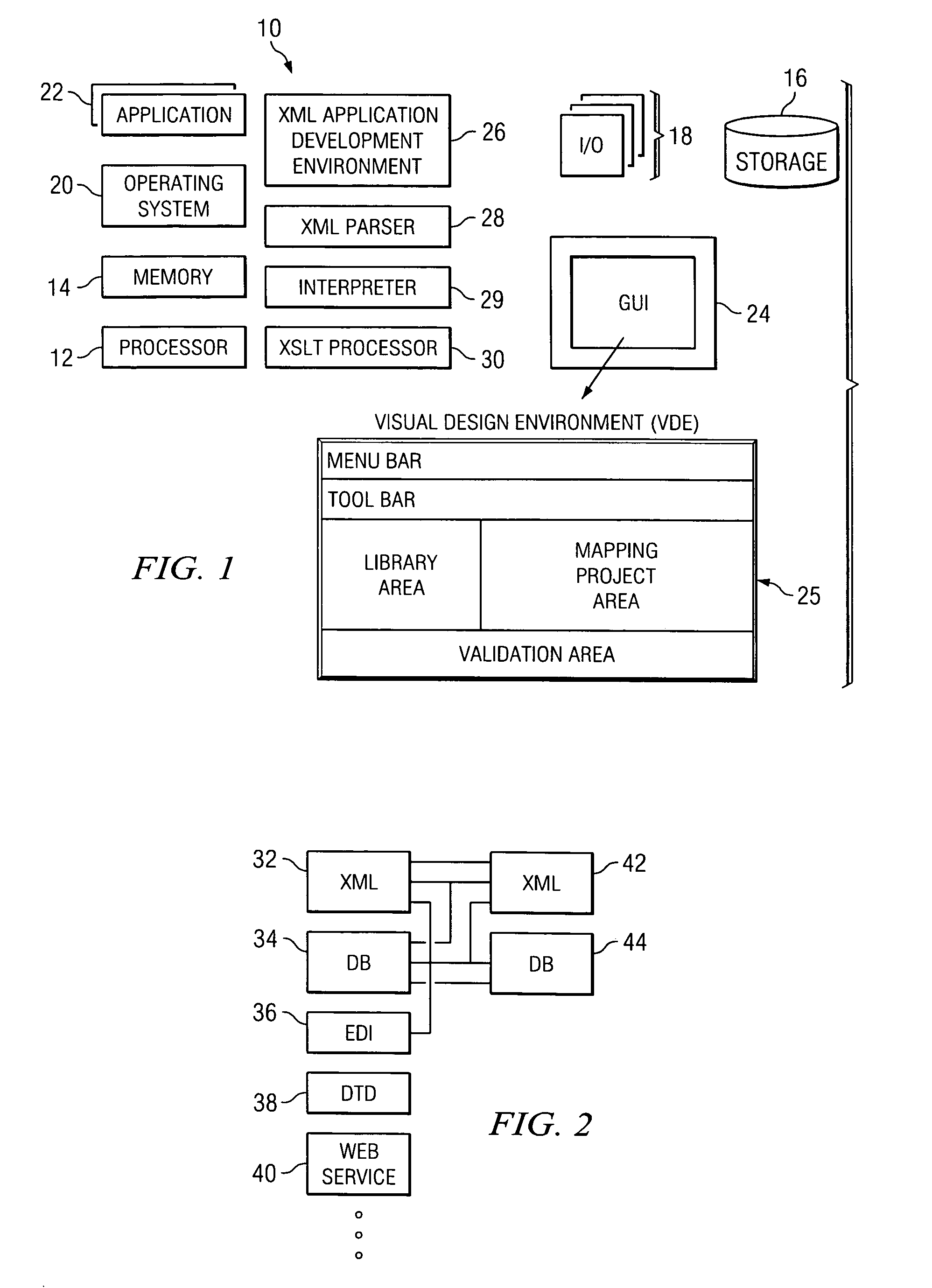Method and system for visual data mapping and code generation to support data integration
a visual data and data integration technology, applied in the field of data integration, can solve the problems of difficult to work with different databases together, relational database systems are inherently difficult to integrate in large scale enterprise applications, and achieve the effect of facilitating the creation of a given visual mapping
- Summary
- Abstract
- Description
- Claims
- Application Information
AI Technical Summary
Benefits of technology
Problems solved by technology
Method used
Image
Examples
Embodiment Construction
[0040] The present invention is implemented in a data processing system such as shown in FIG. 1. Typically, a data processing system 10 is a computer having one or more processors 12, suitable memory 14 and storage devices 16, input / output devices 18, an operating system 20, and one or more applications 22. One input device is a display 24 that supports a window-based graphical user interface (GUI). The data processing system includes suitable hardware and software components (not shown) to facilitate connectivity of the machine to the public Internet, a private intranet or other computer network. In a representative embodiment, the data processing system 10 is a Pentium-based computer executing a suitable operating system such as Windows 98, NT, W2K, or XP. Of course, other processor and operating system platforms may also be used. Preferably, the data processing system also includes an XML application development environment 26. A representative XML application development environ...
PUM
 Login to View More
Login to View More Abstract
Description
Claims
Application Information
 Login to View More
Login to View More - R&D
- Intellectual Property
- Life Sciences
- Materials
- Tech Scout
- Unparalleled Data Quality
- Higher Quality Content
- 60% Fewer Hallucinations
Browse by: Latest US Patents, China's latest patents, Technical Efficacy Thesaurus, Application Domain, Technology Topic, Popular Technical Reports.
© 2025 PatSnap. All rights reserved.Legal|Privacy policy|Modern Slavery Act Transparency Statement|Sitemap|About US| Contact US: help@patsnap.com



